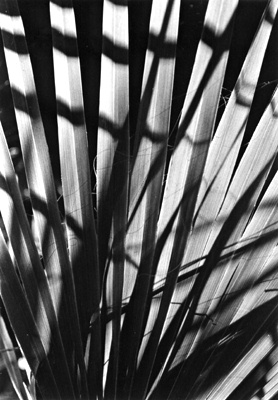All Nonfiction
- Bullying
- Books
- Academic
- Author Interviews
- Celebrity interviews
- College Articles
- College Essays
- Educator of the Year
- Heroes
- Interviews
- Memoir
- Personal Experience
- Sports
- Travel & Culture
All Opinions
- Bullying
- Current Events / Politics
- Discrimination
- Drugs / Alcohol / Smoking
- Entertainment / Celebrities
- Environment
- Love / Relationships
- Movies / Music / TV
- Pop Culture / Trends
- School / College
- Social Issues / Civics
- Spirituality / Religion
- Sports / Hobbies
All Hot Topics
- Bullying
- Community Service
- Environment
- Health
- Letters to the Editor
- Pride & Prejudice
- What Matters
- Back
Summer Guide
- Program Links
- Program Reviews
- Back
College Guide
- College Links
- College Reviews
- College Essays
- College Articles
- Back
A Monsoon Shadi MAG
After more than 20 hours, engine failure and twocontinents, I was there. I don't recall specific details, but the smell was sharpenough to pierce my memory. Foreign odors mingled in the air along with bodyodor; the people were a mass of a thousand shades of brown skin and black hairexactly like mine. I stood there stupidly in the center of the airport inHyderabad, India looking for my family.
They were there to welcome us, buthonestly, I didn't recognize them immediately. They were older, more mature. Weexchanged careful hugs and comments on each others' appearances. The impact offour years with virtually no contact was apparent, but there was little time forsmall talk; we were whisked from the airport straight to the mehendil1ceremony.
Devika, the bride to be, sat patiently on the terrace whilewomen painstakingly drew line after line to adorn her feet and hands. Every womanwaited several hours for the henna to dry and deepen its dye. Our hands wereworthless for the remainder of the day.
When a shadi2 occurs, thefestivities last for a week, rain or shine, in the midst of the monsoon season.My jetlag would have to be ignored; there were 50 people staying in my cousin'smansion. With that number (plus the multitude of daytime visitors and servants),I was always running into somebody.
"Namaste,3" I placed mypalms together in greeting. If they were my elders, I paid respect and didnamaskar.4 They proceeded to speak to me in Hindi, Marathi, and occasionallyTelegu.5 My silence spoke of my ignorance; I was ashamed that I could not speaktheir tongues, and my understanding of their words was only mediocre. I had neverlooked so Indian; I had never felt so American. Most of them continued in heavilyaccented English while others just smiled and left me with a nod.
Eachmorning, my traditional Brahmin6 grandmother would do pooja7. I could havelearned so much from her, but we had no means of communication. My father was theyoungest boy of eight children, older only than his younger sister Anita. When mymother's brother married my aunt Anita, they both moved to America, the countrywhere their spouses had grown up. However, they came back into their mother'shome as if time hadn't passed at all. They joked loudly and ate the food preparedby the cook, roti8 and dal9 and other dishes, only some of which I knew by name.I could not understand how they fell back so easily into a culture that was sodifferent from the one in which they were raising their ownchildren.
Religion in the morning, parties at night - the entire week ofthe wedding passed that way. In addition to daily morning poojas, there wereseveral others for the happiness and prosperity of the bride and groom prior tothe actual wedding ceremony.
There were parties, too. Some lasted allnight, some just for the 20 minutes we could spare from wedding preparation.Sometimes dancers were hired, but most of the time it was just my extremely largefamily and me dancing to music.
Finally, the day arrived. This was the daywe did the least, actually. All my female cousins and I changed into our ghagracholis, lenghas and saris.1O At the scene of the outdoor wedding, we waitedimpatiently with plates of rose petals in our hands for the groom tocome.
BANG, BANG - from two blocks away we could hear the drummer hiredespecially for the occasion. Then, the long line of men with their firecrackersarrived. Somewhere amidst all this, the groom stood regally with his horse. Wethrew our rose petals and watched as 1,200 wedding guests enjoyed theevent.
After several preliminary mantras and blessings were chanted towish the bride and groom happiness, it was time for them to walk around the fireseven times to seal their promise to each other and God.11
My cousin wasfinally married, and my family's investment of time and sanity to witness herwedding was the best we have ever made. Not only did I learn more about myculture, but I also identified better with my family and with myself as anIndian-American.
1 The Hindi word for henna. In this context, itrefers to the traditional bridal ceremony in which all women attending thewedding, including the bride, have intricate henna patterns placed on their handsand feet by skilled artists.
2 The Hindi word for wedding
3 InHindi, the common greeting for "Hello"
4 Bending down andtouching the elder's feet as if you are taking their blessing. A sign of respectin Indian culture.
5 Regional Indian languages
6 The highest in theHindu caste system
7 Hindu religious ceremony, involving die worship ofvarious gods, chanting of mantras from Hindu scripture, and small offerings.Usually done in the home for prosperity.
8 Whole wheat Indian circularflatbread
9 Spiced lentils
10 Types of Indian formalwear
11 The most important part of the 2-3 hour Hindu wedding ritual; the equivalent of saying "I do."

Similar Articles
JOIN THE DISCUSSION
This article has 0 comments.
